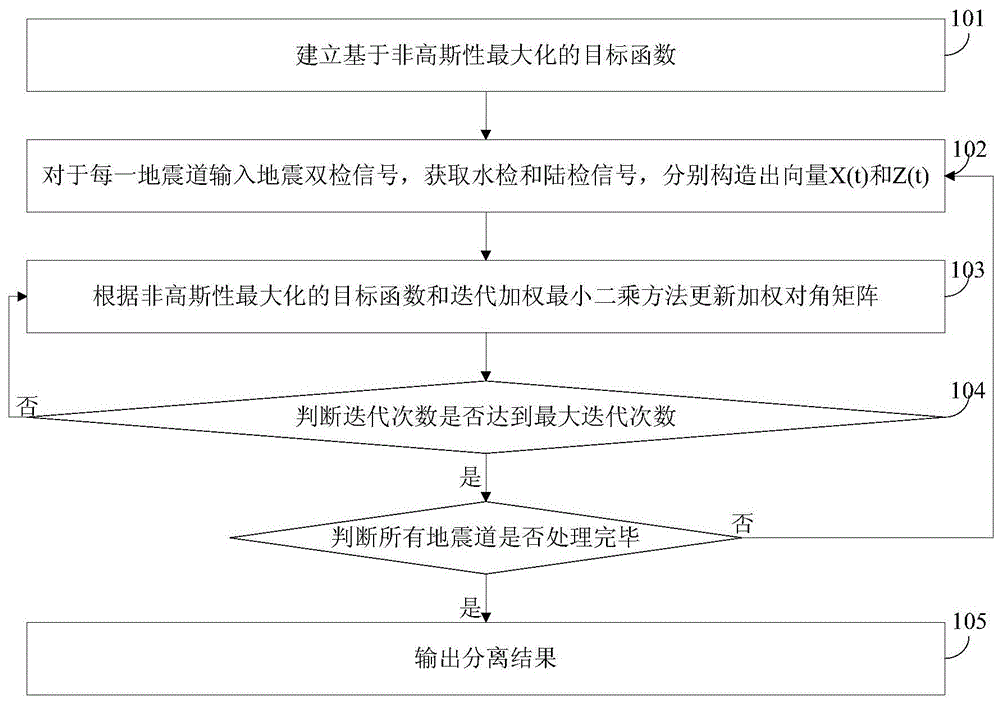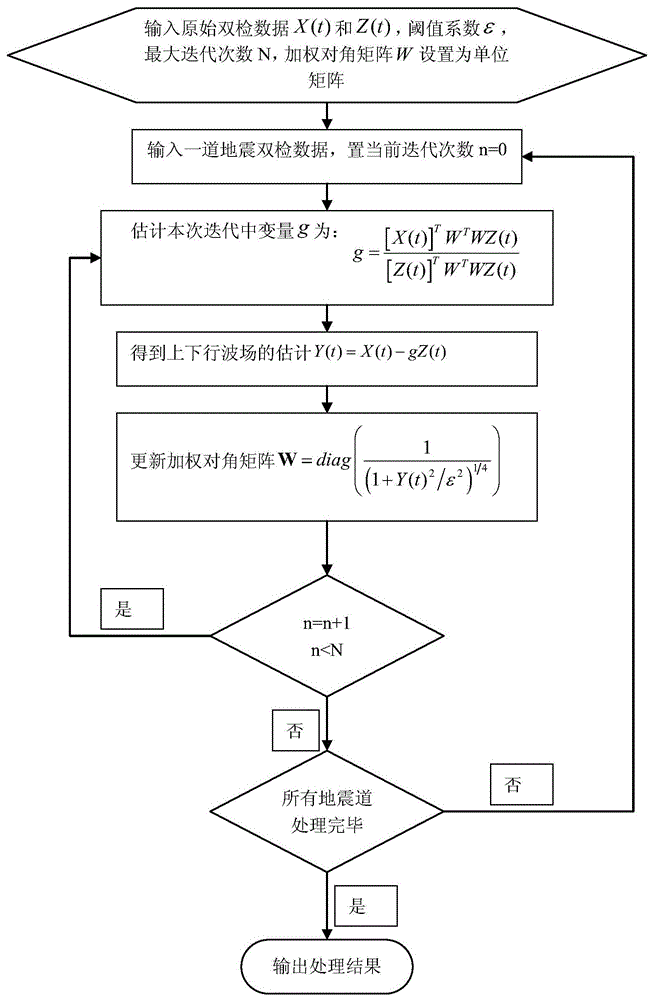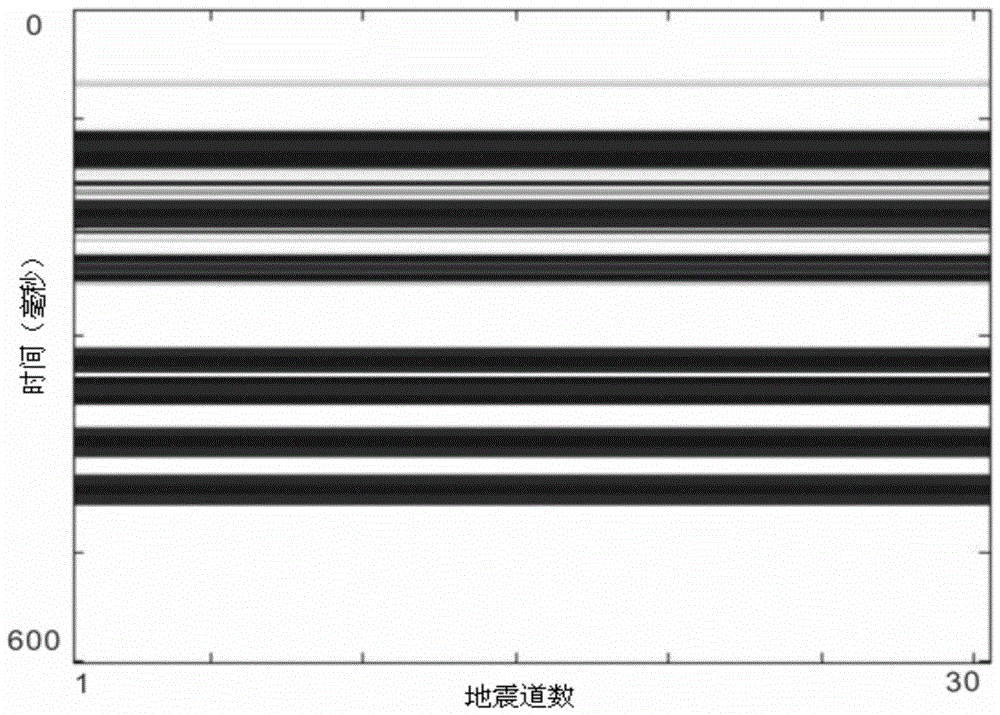A Method for Separation of Uplink and Downlink Wavefields Based on Non-Gaussian Maximization
A separation method and Gaussian technology, which is applied in the field of separation of upstream and downstream wavefields of double-detection signals based on maximization of non-Gaussianity, and can solve problems such as being unsuitable for on-site actual data processing and inability to meet
- Summary
- Abstract
- Description
- Claims
- Application Information
AI Technical Summary
Problems solved by technology
Method used
Image
Examples
Embodiment Construction
[0046] In order to make the purpose, technical solution and advantages of the present invention clearer, the implementation manners of the present invention will be further described in detail below.
[0047] The embodiments of the present invention utilize the super-Gaussian distribution characteristics of seismic signals [8] to realize the separation of uplink and downlink wave fields in the time-space domain. According to the formulas (1a) and (1b), the embodiment of the present invention separates the wave field track by track, thereby avoiding the assumption that the detectors are evenly distributed and the recording surface is a plane, which is more in line with the actual data processing, see figure 1 and figure 2 , see the description below:
[0048] 101: Establish an objective function based on non-Gaussian maximization;
[0049] Considering that the embodiment of the present invention separates the uplink and downlink wavefields track by track in the time-space do...
PUM
 Login to View More
Login to View More Abstract
Description
Claims
Application Information
 Login to View More
Login to View More - R&D
- Intellectual Property
- Life Sciences
- Materials
- Tech Scout
- Unparalleled Data Quality
- Higher Quality Content
- 60% Fewer Hallucinations
Browse by: Latest US Patents, China's latest patents, Technical Efficacy Thesaurus, Application Domain, Technology Topic, Popular Technical Reports.
© 2025 PatSnap. All rights reserved.Legal|Privacy policy|Modern Slavery Act Transparency Statement|Sitemap|About US| Contact US: help@patsnap.com



